
Caper bushes are especially pretty in spring when their impressive flowers are in bloom. They abound in olive groves, especially in patches of land which do not undergo strenuous tilling, which is why they are usually found on the borders between fields or by the roadside. The field across from my house was full of caper bushes growing uncultivated when I first arrived in the neighbourhood a decade ago; now, they've all but disappeared, although they are found in other fields close by to where I live. They are stunning as hanging plants, growing in amongst the crevices of high rocks. They are not fun to work with: they have sharp thorns that get stuck in your skin and clothes.
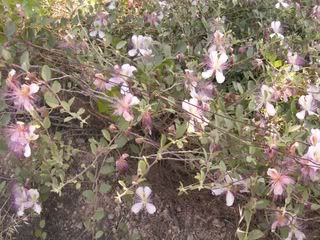
Capers have been known since ancient times in Greece as a pain reliever for rheumatism, but they are generally not used in Greek cooking. I know of a couple of people in Crete who pickle them, but they are mainly older people who do it as a way to pass their time, and have something unusual to give away as a present for friends (which is how I acquired a jar). Despite this, the Greeks - probably islanders, where caper bushes grow profusely - have invented their own recipe for them: they are eaten as a kind of horta: branches, leaves, buds and even the seed pods. Therefore, all parts of the caper bush are edible. Once they have softened, they can be used to flavour salads and other meals. Anne Yiannoulis gives a recipe in her Greek Calendar Cookbook: "Pick short branches from a caper bush, wash well, lay in a bowl, cover with boiling slated water (50g salt to 1kg of branches). Leave in the sun for 3-4 days, changing the cold water every day. Strain, place in a jar, cover with vinegar and a handful of salt. They are ready to eat in a few days, drained and served with anchovies in an oil dressing." We don't eat anchovies, preferring fresh fish instead, so I'm wondering whether this preparation would be a wasted effort in my own home.
UPDATE: these capers looked so fresh and tender that I pickled the lot.
The last time I pickled capers was over a decade ago. This year, my family's been eating puttanesca spaghetti, a lazy Saturday meal, on a regular basis, something we enjoyed eating in Paleohora on our mini-break. I've been using store-bought capers for this purpose; now I have a reason to pickle them myself. The capers were found in a field very close to my house. But I won't be able to use them this summer - they need a few months to pickle, so they'll be ready to use in autumn if I jar them now. In Greece, all sizes of caper buds are used in pickling, although you will only find very small bead-like capers in store-bought jars. This is because commercial growers of capers grade them according to their size, and the tiniest ones are the most prized. GourMed has a simple recipe for pickling capers. I used this one and added a few more spices - a bay leaf and some carnation cloves - for a more piquant taste. I left part of the stalk on the caper buds, but I couldn't understand what to do with the tender shoots - they were all covered in thorns, right to the topmost bud. None of my sources mention whether we need to get rid of the thorns before pickling or if they soften in the brine solution.
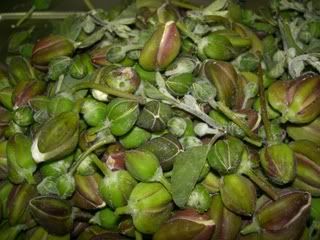
Since I can't use my pickled capers to flavour my salads at the moment, I'll just have to stick to glistrida (γλιστρίδα - purslane), the local variety of watercress growing wild in the garden, to do that in the interim.
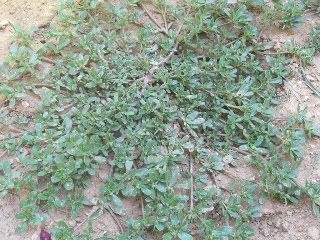
©All Rights Reserved/Organically cooked. No part of this blog may be reproduced and/or copied by any means without prior consent from Maria Verivaki.
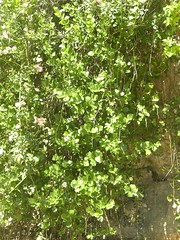
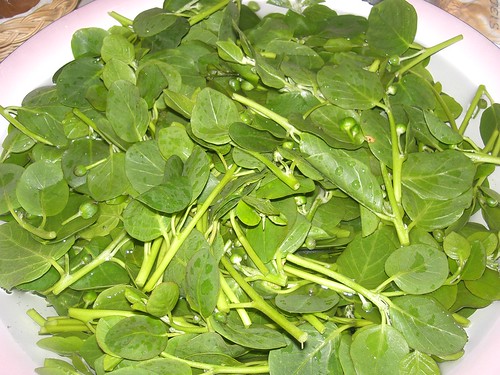
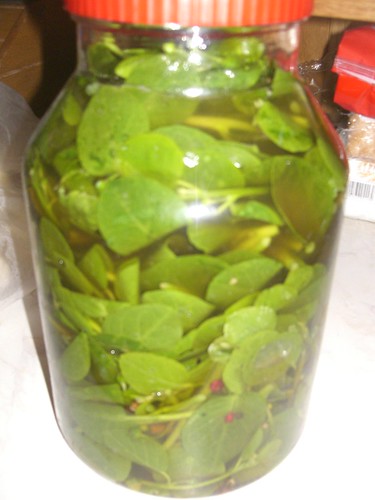
Wow - they're pretty spectacular! My local deli-cafe serves pickled capers like these with cheeses, meats, and salads - they're always a real treat.
ReplyDeleteLook at those "gaidorissia" capers...they're huge! You're very fortunate to be able to forage for so many things in Crete...wish I was there.
ReplyDeleteAs for the purslane...it even sprouts up here in Canada late July...gotta find a patch where dogs & cats don't go!
There were capers growing all over the island of Kea in June..thyme was also in bloom so our walks along ancient paths to the temples were very pretty and fragrant too.No capers growing here in Canada but purslane grows everywhere as a weed...I have now learned that you can use it...thank you:D
ReplyDeleteGood info here! I've tried to grow capers, but had no luck getting the seeds to sprout. You've given me new ideas for how to use them though, so I think I'll pick up a fresh seed packet and give it another try.
ReplyDeleteThough capers aren't used in Crete, there are a number of island recipes using capers, particularly in the Kyklades. I'll be interested to hear how your capers come out!
ReplyDeleteLaurie also said:
ReplyDeleteyou are so right about the injuries - they have nasty thorns. I'm glad you mentioned that in your piece because as you were writing about the recipe for caper branches, all I could think of were the thorns sticking in my throat. When we were recently in Santorini, I bought some pickled caper leaves. Maybe the idea is you preserve the branches, but use only the leaves, doing the cleaning at the time of use
There are many Greek recipes that use pickled capers. You can buy small jars of them in all supermarkets.
ReplyDeleteEuterpe K
it is know as "Gebre" in Turkiye and used in salads too :)
ReplyDelete